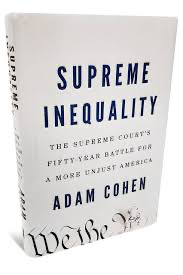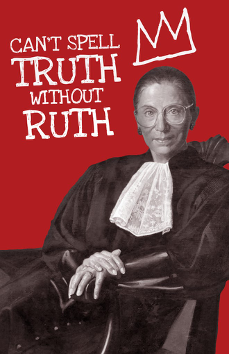
I went to law school during the era of the Earl Warren Supreme Court (1953 to 1969). So did Ruth Bader Ginsburg. She graduated from Columbia in 1959. I graduated from Boalt Hall at UC Berkeley in 1965. That’s about as close as I ever came to being on the same playing field as RBG.
Her death last week brought both grief and controversy. Her passing was not unexpected but it was politically untimely and has inflamed passions on both sides. Someone will be appointed to succeed her, but no one can replace her. She was one of a kind, and when she lies in state in Statuary Hall at the US Capitol on Friday, she will notch another first… the first woman ever to be accorded the honor.
I’m passing quickly through the five stages of grief – denial, anger, bargaining, depression, and acceptance. Every morning this week I’ve begun my day listening to Gregorian chants and every evening given myself over to a goyish version of sitting shiva (the week long mourning period observed by a Jewish family).
I’m trying not to get caught up in the successor controversy. Senate Republicans have the votes to confirm whomever the president nominates in the foreshortened time frame of the upcoming election and presidential inauguration. As Mr. Trump says, “It is what it is.”
On the other hand, there is the supreme hypocrisy of a process that denied Obama’s nominee, Merrick Garland, a hearing with ten months to go in the presidential term and this rush to confirm in 43 days. Regardless, it looks like Trump’s nominee will be a sitting member of the Supreme Court on January 20, 2021 and with 200 federal judges already confirmed by the Senate since 2016, American jurisprudence will be changed for generations.
But America itself has already changed… In four short years we have seen the nation transformed from a democracy courageous enough to elect an African American president to a backward-looking country ignorant enough to elect a white supremacist.
RBG saw it coming and called Mr. Trump a “faker” during the 2016 campaign. She said she could not imagine what it would be like if he became president. She realized the remark was inappropriate and almost immediately acknowledged her error by saying, “Judges should avoid commenting on a candidate for public office.”

On a higher note, I’m sure she would agree with Adam Cohen’s analysis of the court in Supreme Inequality: The Supreme Court’s Fifty-Year Battle for a More Unjust America. With precision and perspective, Mr. Cohen, a member of the New York Times editorial board and editor in chief/president of Volume 100 of the Harvard Law Review, details the court’s rightward march in favor of corporations and wealthy individuals to the detriment of the middle class and poor.
“Cohen’s ambitious, well-written book makes a convincing case that the court has contributed to growing inequality through its rulings on everything from election law and education to corporate law and crime.” —Christian Science Monitor
Mr. Cohen shows us case by case how the court has changed since liberals dominated the Warren court of the 60s and 70s. The pendulum swing is dramatic but not surprising. One can only hope with Martin Luther King that “The arc of the moral universe is long but bends toward justice.”
The more immediate concern as we wait for that arc to bend is Attorney General William Barr’s relentless efforts on behalf of a more powerful executive. Those efforts are undermining the concept of three co-equal branches of government. If successful and the Supreme Court becomes unbalanced 6-3 in favor of conservatives, it could take decades to rebalance our judicial system. The loss of RBG at this time is particularly upsetting.

She was a tiny giant whose work on behalf of equal pay, equal protection, and equal opportunity changed the landscape for all of us but American women in particular. Her blistering dissents on behalf of equality are legendary. Her law clerks idolized her, and her opinions are renowned for their clarity and carefully crafted prose. As an undergraduate at Cornell,, she studied comparative literature with Vladimir Nabokov, the famous prose stylist, whom she credits with making her a better writer.
She had always been admired by her peers on the court, but became a celebrity to others when she became the subject of two films recognizing her importance on the court, her singular achievements, and the distinctive lace collars she wore when the court was in session – some during oral argument, some for reading majority opinions and others to signal her dissent (photograph at the top of this essay).
Ruth Bader Ginsburg died on Friday, September 18, 2020 and will be buried next to her husband, Marty, at Arlington National Cemetery on Saturday, September 26th following two days in repose under the portico at the Supreme Court and one day in Statuary Hall in the Capitol rotunda.
RIP RBG
































Too bad they aren’t publishing more photos of Ruth as a young woman. She was a babe.
I’ve been thinking about the Demos expanding the court, which they could easily do if they take over the senate & win the presidency. But even if they enlarged it by 3, which seems a real long shot, the court would still be tied up 6 & 6.